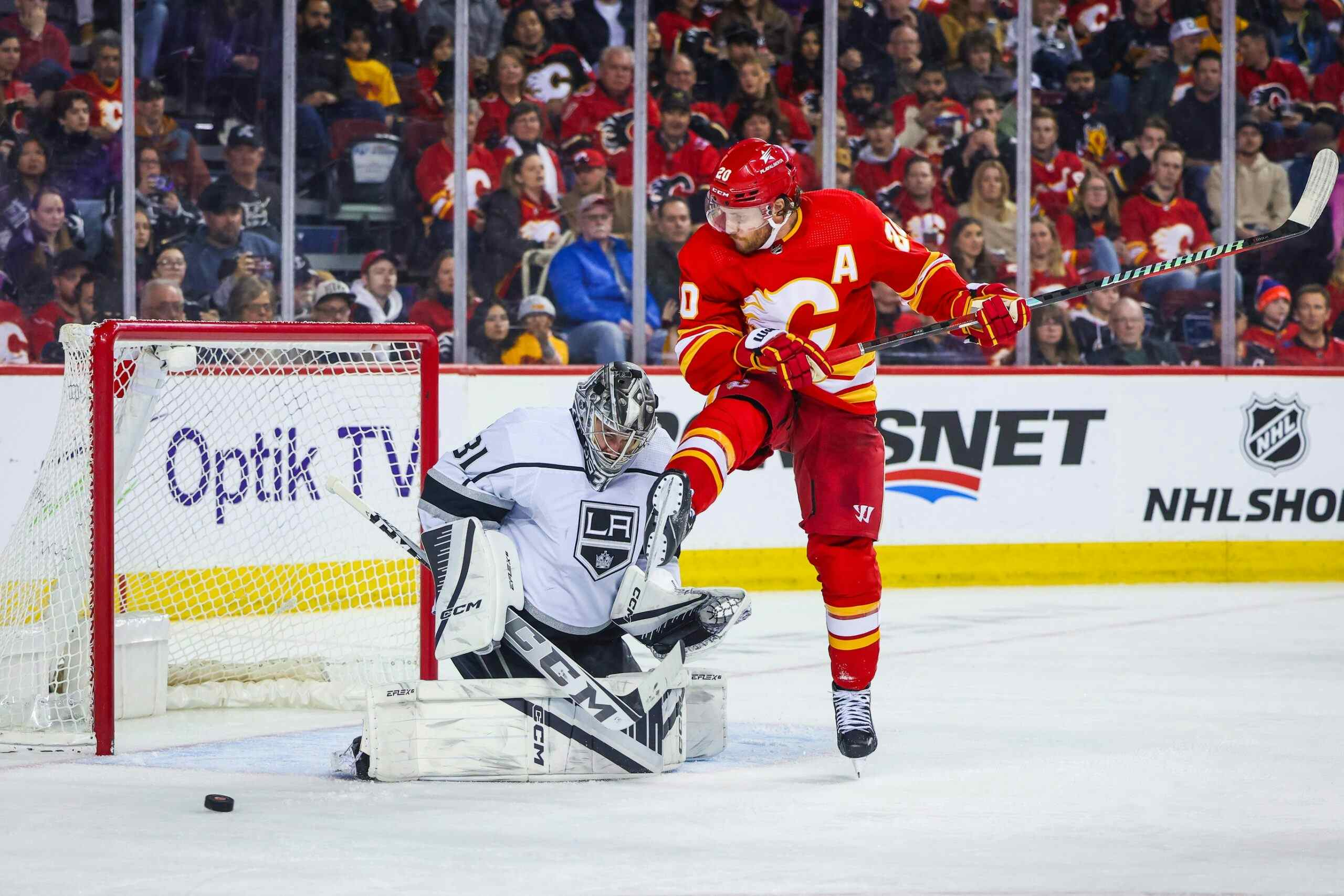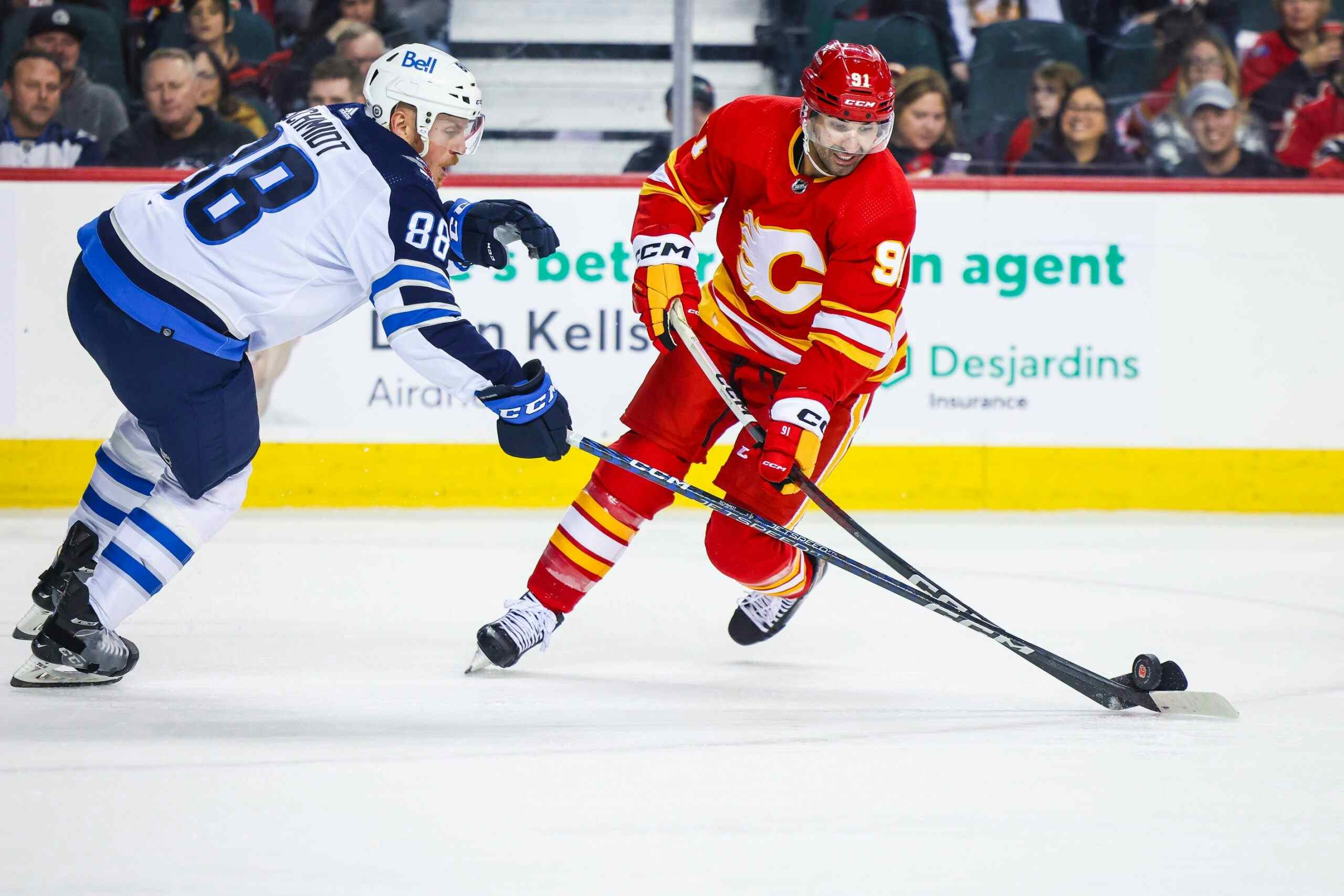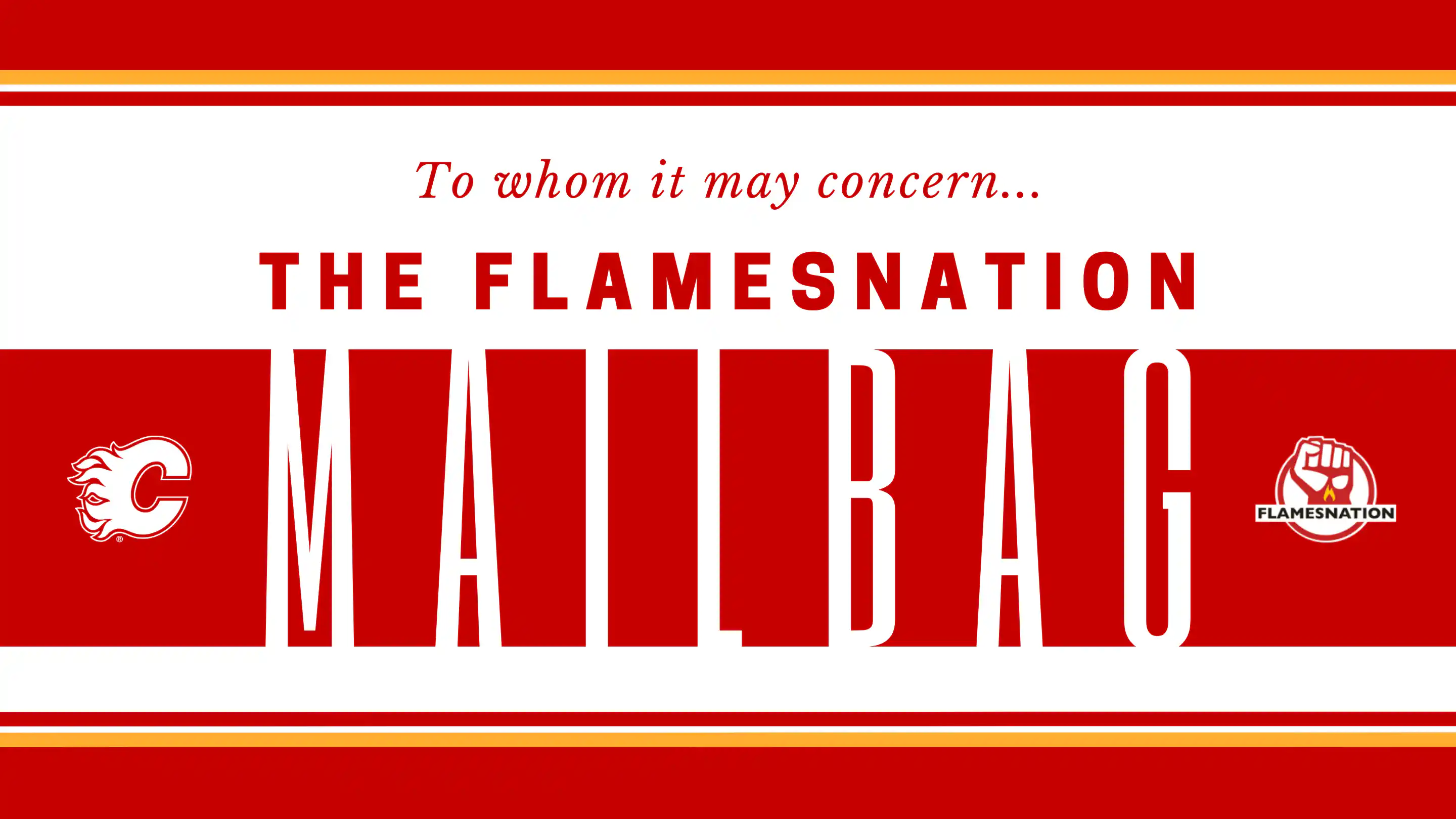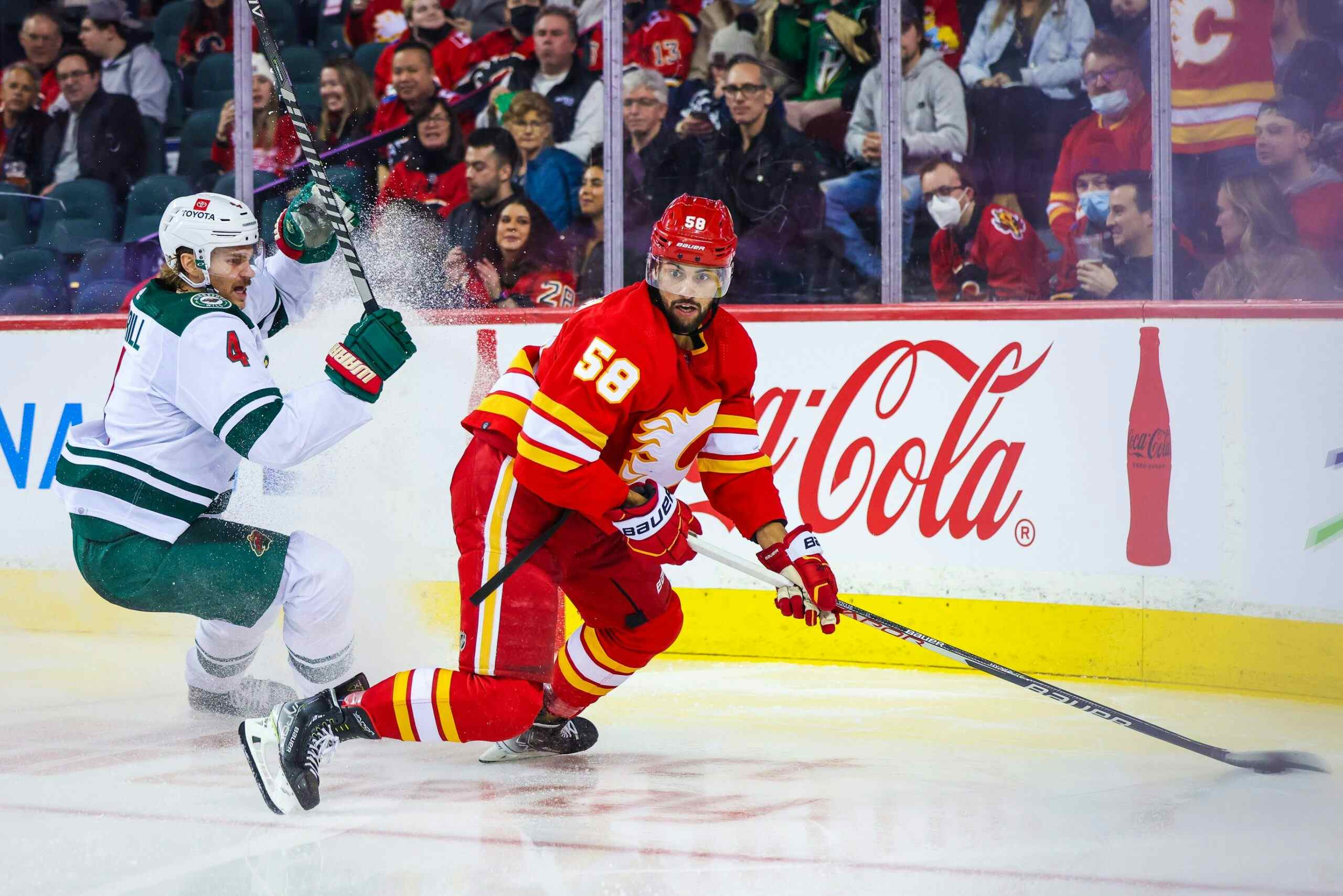Five things: Who’s gonna make it, part 4
By Ryan Lambert
9 years ago
1. That’s it for forwards
Over the last three weeks I’ve looked at 12 forwards who I thought had a borderline chance to spend a decent amount of time with Calgary this season and found that there was actually a pretty healthy mix of guys I thought had a chance to stick around longer than that. It’s something I wasn’t really expecting when I embarked on this project, though perhaps that means I’m higher on the prospects this team has than its veterans, and I’m not sure I can be faulted for that.
But now that brings us to the team’s defensemen, and for my money there are four who probably merit at least some kind of look in the coming season. The problem for these players is that the Flames’ blue line is significantly more established than its forward rolls, and as a consequence it’s going to be hard for anyone to break through overall, as far as I’m concerned.
That’s not to say these players aren’t going to try, or even be given a shot, of course. But with six guys on one-way deals already, and pretty much all of them making good money (no one pulls less than the immovable TJ Brodie’s $2.125 million), the odds that any can be supplanted seem rather slim.
So here we go…
(And before you ask, no, next week won’t feature any goaltenders. There aren’t really any goaltending prospects, apart from Joni Ortio, who even have a chance to make the club. And besides, it’s pretty clear that the organization is committed to a Jonas Hiller/Karri Ramo battery for at least this season, and perhaps beyond, anyway.)
2. Ryan Culkin
Culkin is a guy I think it’s pretty easy to dismiss. He has no pro experience, he’s a late-round pick, and he’s another left-shot defenseman on a team that has five of them already (Dennis Wideman is the only exception among the guys on one-way deals).
But to be fair, he also seems to provide something that few other Flames defensemen do: Put up points. Last year in the QMJHL (and yes, I know, the Q is ludicrously high-scoring and bad defensively), he scored 50 points in 65 games, including 36 in 38 with Quebec. Moreover, he bombed goalies for 143 shots in those games (2.2 per, which isn’t bad at all for a defenseman). He’s also size-y, at 6-foot-2 and 201 pounds, so that helps in terms of “being hard to play against” but his PIM totals — 44 last season, only 130 in his Q career — don’t suggest much in the way of “pugnacity,” so you have to wonder whether he really fits in.
So with all that having been said, I really don’t see a chance he gets more than a game or two in an extreme emergency situation. Pro hockey is not like the Q, and Culkin probably has more to learn than just about any Flames prospect in this regard. Chances he makes the team at all next season are, for my money, next to zero.
(It occurred to me a little too late that Brett Kulak fits much the same mold as Culkin: a rookie late-round pick trying to crack the roster after putting up big numbers in junior. I don’t think Kulak does it either, and I don’t have the extra number to squeeze him in here to get to the more interesting guys on the list. SORRY BRETT!)
3. Mark Cundari
Cundari, on the other hand, is a relatively young multi-year veteran of both the AHL and NHL (though that for just eight games over the last two seasons). He just turned 24 in April and of the Flames’ prospects — can you call a guy with 231 AHL games a “prospect?” — he is certainly the most seasoned.
The numbers don’t suggest he was all that good in terms of getting the puck forward, though to be fair he actually played some of the toughest competition of anyone on the team, which has far more of an effect on his numbers than his super-favorable zone starts. Again, though, this is an extremely limited sample, because he played about 11 minutes a night for four games.
Meanwhile, it’s obviously tough to parse his AHL numbers, because their stat-keeping is not very good, but his 105 shots in 56 games speaks well for him overall, I’d say. There are, unfortunately, no time on ice numbers.
Given a number of factors I’d say he’s pretty clearly the second, or perhaps even third, guy in line for a call-up if it comes. Which, given the overall health of the defense last year, is a distinct possibility. He’s fine for Calgary but little more than that; a veteran presence if one is needed. But I don’t think he’s Their Guy.
4. Patrick Sieloff
Now this right here is an interesting case. Unlike Cundari and Culkin, this is a very young guy who has been highly regarded by the organization for some time now, who has World Junior experience, and who clearly has a pedigree of strong play.
But there is obviously his history of unfortunate injuries and worse, low-lighted by the staph infection that held him to just two games at any level last season, and those were in early October. That makes it extremely difficult to project what he could do at any level this season. One has to believe he
Despite the fact that it feels like we’ve been hearing his name forever, the kid only just turned 20 in May, and obviously has a lot ahead of him. So the real question, then, is whether he can translate whatever success he might have in the AHL next season (his obvious starting spot) into even a brief NHL appearance. I’d say given the ceiling that’s entirely likely, and if the organization wants to give him a taste of the bigs ahead of Cundari — particularly when they’re out of the playoff race in January and beyond — then I don’t think you can begrudge that.
But overall, I’m not exactly bullish on him getting into an NHL game. He’s 20, he has two games of pro experience. He’s essentially in the same boat as Culkin, and might even have a longer road back because of the health problems. But that ceiling has to be considered pretty high, so it’s not outside the realm of possibility.
5. Tyler Wotherspoon
Looks to me as though this guy right here is your No. 7 defenseman. For good or ill.
Wotherspoon got into 14 games in the NHL last season, and did not acquit himself well. His possession numbers were in the toilet, and that came despite soft competition and some of the team’s most favorable offensive zone starts. Maybe you can chalk some of that up to his age (21 this past March), and the quality of the team overall (especially the guys he played with, who were not very good). But nonetheless, I’m pretty iffy on the idea of this guy getting more minutes than Cundari.
People seem to like him a lot, though, and maybe that’s a result of the whole “everyone overrates their own prospects” thing. You have to ask yourself this: If the blue line didn’t get decimated last season, and he wasn’t a kid with a big draft number, does he get the look over Cundari? I think it’s the same argument you can make for why Sieloff might get a crack at things next season: He’s young and highly valued, and the idea of getting him NHL experience might trump the team’s desire to win games for a few more years here. The numbers say he didn’t deserve the shot he got, and I’d tell you about the eye test but I don’t remember this kid doing a damn thing last season.
Certainly, the small number of AHL stats don’t indicate much: Less than a shot per game (45 in 48) and far less production than Cundari offered. That doesn’t come off as too promising, even if he was only 20 for most of the year.
If it were me running things, the call-up order would go Cundari, Wotherspoon/Sieloff, Culkin/Kulak. Once you get any farther beyond that, whom you call up is largely irrelevant.
Recent articles from Ryan Lambert





